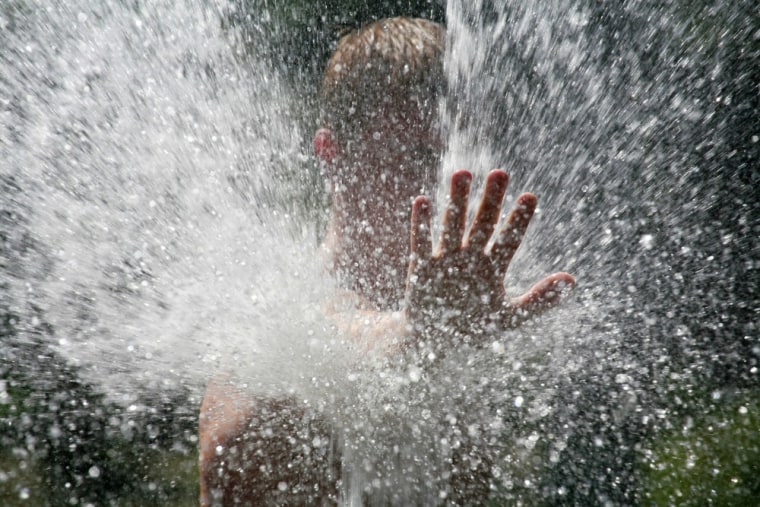2010 is running neck-and-neck with 1998 as having the warmest first eight months of a year since the start of recordkeeping in 1880.
The planet's average temperature for January-August was 58.5 degrees Fahrenheit, tying the 1998 record for that period, the National Oceanic and Atmospheric Administration said Wednesday. That temperature was 1.21 degrees F above the 20th century average.
A late-surge in temperatures at the end of 2005 made that year the warmest full year on record.
NOAA's National Climatic Data Center also reported:
- It was the third-hottest August on record with an average temperature for the month of 61.2 degrees F (16.2 C). The hottest August was 1998, followed by 2009.
- The meteorological summer — June-August — averaged 61.3 degrees F, making it the second-hottest summer on record worldwide behind 1998.
- August was hotter than normal in eastern Europe, eastern Canada and parts of eastern Asia but cooler than normal in Australia, central Russia and southern South America.
Meanwhile, a separate report from the National Snow and Ice Data Center said the sea ice coverage this summer in the Arctic was the third-lowest since satellites began measuring that in 1979. Only 2007 and 2008 were lower.
Sea ice levels appear to have reached their low for 2010 on Sept. 10, the center said. The extent was 1.8 million square miles — 625,000 square miles below the 1979-2009 average minimum.
"Despite a late start to the melt season, the ice extent declined rapidly thereafter, with record daily average ice loss rates for the Arctic as a whole for May and June," the center stated. "Assuming that we have indeed reached the seasonal minimum extent, 2010 would have the shortest melt season in the satellite record, spanning 163 days between the seasonal maximum and minimum ice extents."
The sea ice report follows news that tens of thousands of walruses had flocked to shorelines because the sea ice they normally rely on this time of year was scarce.
Melting sea ice is part of a pattern of changes atmospheric scientists attribute to global warming, which has been documented in rising temperatures over the last several decades.
Other changes include melting ice in Greenland and Antarctica, which can lead to rising sea levels, a decline in glaciers and changes in weather patterns around the world.
